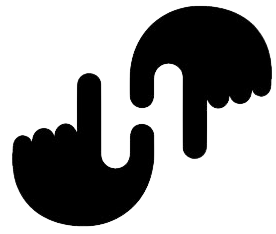What is the message of Where the Wild Things Are?
Imagination. Imagination is a central theme of Where the Wild Things Are. When Max’s anger gets the better of him and he is sent to bed without supper, he turns to his imagination for solace. Alone in his bedroom, he creates fantastical “wild things” as his company.
Why Is Where The Wild Things Are Banned?
Readers believed Where the Wild Things Are was psychologically damaging and traumatizing to young children due to Max’s inability to control his emotions and his punishment of being sent to bed without dinner. Psychologists called it too dark, and the book was banned largely in the south.
Where the Wild Things Are emotions?
Fear, joy, sadness, confusion: Records can do any emotion and it never once feels like he’s acting. His performance validates the entire movie because it forces the viewer to confront these emotions and they may make you uncomfortable but that doesn’t mean they’re wrong or shouldn’t be allowed.
Where the Wild Things Are conflict?
Conflict. The conflict in this story is Max wants to act like a “wild thing” and his mother scolds him and sends Max to his room without dinner.
Is Where The Wild Things Are Scary?
Shatters Innocence The Atlantic’s own Alyssa Rosenberg accuses the the film of going heavy on violence and terror, but says that it’s the level of emotional ambiguity that ends up challenging developing minds the most: “There’s no question that Where the Wild Things Are is often quite frightening…But it’s also a movie …
Where the Wild Things Are point of view?
Third Person (Omniscient)
Where the Wild Things Are moral lesson?
1. Don’t judge someone (or something) by his or her appearance. And the wild things roared their terrible roars and gnashed their terrible teeth and rolled their terrible eyes and showed their terrible claws. The wild things may have had terrible roars and teeth and claws, but they weren’t as terrible as they seemed.
Where the Wild Things Are lesson plans kindergarten?
10 “Where the Wild Things Are” Activities We LoveCreate a Wild Thing sculpture. SOURCE: Matsutake. Make a Wild Thing mask. Work on all kinds of skills. Write about feeling wild. Have an action word rumpus. Play a Wild Thing counting game. Use shapes to make a Wild Thing. Slip on some Wild Thing feet.
Who is the antagonist in Where the Wild Things Are?
Lord Voldemort
Where the Wild Things Are writing style?
The only literary technique used in this book was the technique of personification. The monsters could talk and often did. Character: The main character is a boy named Max who was very mischievous. His mischief led to him being sent to his room where he drifts off into the world of wild things.
Where the Wild Things Are Setting?
Setting: The setting of the book begins and ends in Max’s house, in which he is running around being mischievous, and eventually sent to bed without dinner. Most of the story takes place “where the wild things are,” which is presented as a jungle-like atmosphere where Max is deemed king.
Where are the wild things?
Where the Wild Things Are is a 2009 fantasy film directed by Spike Jonze. Written by Jonze and Dave Eggers, it is based on Maurice Sendak’s 1963 children’s book of the same name. It combines live-action, performers in costumes, animatronics, and computer-generated imagery (CGI).
Where the Wild Things Are background?
The book is about the author’s childhood Where The Wild Things Are is inspired by Maurice’s youth, his background growing up in Brooklyn and his relationship with his parents. He intended to write about his own experiences and the people he knew, and the books became a form of self-expression for him.
Where the Wild Things Are First Edition identification?
First Edition Identification and Notes Where The Wild Things Are was first published by Harper & Row in 1963. First editions have the Library of Congress number on the title page, the codes 40- to the front flap, and the absence on the rear flap of the mention of the Caldecott Award.
Where the Wild Things Are grade level?
Where the Wild Things AreInterest LevelReading LevelATOSGrades K – 3Grades 2 – 53.4
What age group is where the wild things are appropriate for?
This picture book is an excellent choice to share during homeschooling, in particular for children ages 4 to 6. It’s a fun way to learn to read and as a supplement for activity books for children. Introduce a new generation to Max’s imaginative journey with this special anniversary edition.
How do I find the reading level of a book?
Lexile look up – The Lexile Framework for Reading website lets you look up books that match your child’s reading level. You can also look up the reading level of an individual book on the same page, using the book’s ISBN number or its title. Hint: the “Quick Book Search” tab is at the top right of the page.
What reading level is the giving tree?
The Giving Tree: Silverstein, Shel, Silverstein, Shel – Amazon.comwww.amazon.com › Giving-Tree-Shel-Silversteinwww.amazon.com › Giving-Tree-Shel-Silverstein
What is the lesson of the Giving Tree?
In short, not tallying things up is one hard lesson for us needy people to learn, but The Giving Tree teaches it so well. She gives and gives and gives, never expecting anything in return, never asking for her due, never REMINDING the Boy of all she has sacrificed.
